why Human Wildlife Conflicts Occurred in India
বিবরণ
why Human Wildlife Conflicts Occurred in India
6
লাইক
970
ভিউ
2 ফেব
2022
Human-Wildlife Conflict refers to the negative interaction between humans and wildlife that result in losses in terms of life, property or resources.Due to an expanding human population, it is almost inevitable that humans will encroach into the natural habitats of the animal kingdom. As a result, many nations have included mitigation of human-wildlife conflict as part of their national environmental team.This article will give details about Human-Wildlife Conflict within the context of the IAS Exam. One would also read key findings of the latest UNEP and WWF Report titled, ‘Future for All’ based on Human-Wildlife Conflict.
The factors leading to Human-Wildlife Conflict are the result of humans coming in proximity to natural habitats of wildlife. For instance, crops are raised by herbivores and livestock by carnivores, leading the farmers that depend on both to take extreme measures in preventing the loss of wildlife.
With a rapidly increasing human population and high biodiversity, interactions between people and wild animals are becoming more and more prevalent
Habitat disturbance is the destruction of the home of wild animals. Humans kill or chase wild animals by digging, cutting, sealing by stones and smoking in their natural habitat.
Other factors include large scale habitat destruction through deforestation overgrazing by livestock and expansion of human settlements and agriculture.
Human-wildlife conflict (HWC) occurs when animals pose a direct and recurring threat to the livelihood or safety of people, leading to the persecution of that species. Retaliation against the species blamed often ensues, leading to conflict about what should be done to remedy the situation. Although this is not a new scenario — people and wildlife have coexisted for millennia — it is one that is becoming much more frequent, serious and widespread, and a global concern for conservation and development alike. HWC affects most large carnivores, as well as many other species groups including, but not limited to, elephants, pigs, deer, primates, sharks, seals, birds of prey, crocodiles, rhinos, otters.Human-Wildlife Conflict refers to the negative interaction between humans and wildlife that result in losses in terms of life, property or resources.Due to an expanding human population, it is almost inevitable that humans will encroach into the natural habitats of the animal kingdom. As a result, many nations have included mitigation of human-wildlife conflict as part of their national environmental team.This article will give details about Human-Wildlife Conflict within the context of the IAS Exam. One would also read key findings of the latest UNEP and WWF Report titled, ‘Future for All’ based on Human-Wildlife Conflict.
The factors leading to Human-Wildlife Conflict are the result of humans coming in proximity to natural habitats of wildlife. For instance, crops are raised by herbivores and livestock by carnivores, leading the farmers that depend on both to take extreme measures in preventing the loss of wildlife.
With a rapidly increasing human population and high biodiversity, interactions between people and wild animals are becoming more and more prevalent
Habitat disturbance is the destruction of the home of wild animals. Humans kill or chase wild animals by digging, cutting, sealing by stones and smoking in their natural habitat.
Other factors include large scale habitat destruction through deforestation overgrazing by livestock and expansion of human settlements and agriculture.
Human-wildlife conflict (HWC) occurs when animals pose a direct and recurring threat to the livelihood or safety of people, leading to the persecution of that species. Retaliation against the species blamed often ensues, leading to conflict about what should be done to remedy the situation.
-
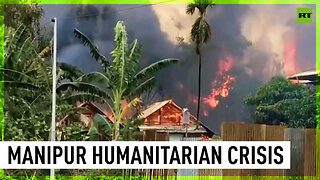 1:44
1:44
RT
1 year agoDeadly ethnic clashes grip India's Manipur
1.14K12 -
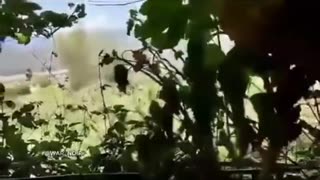 0:40
0:40
RCF - Real Combat Footage: Unfiltered Perspectives on War Military Actions and Conflicts
8 months ago🇮🇳 India Ethnic Clashes | Kuki and Meitei Conflict in Manipur | RCF
16 -
 5:10
5:10
IOL-IndependentOnline
3 years agoCanine virus threatens India's last Asiatic lions
16 -
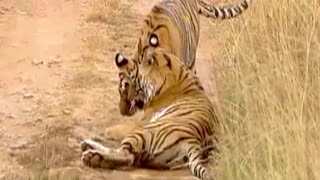 1:00
1:00
JTN2020
1 year agoIndia’s endangered tiger population is rebounding
137 -
 2:12
2:12
RT
9 months agoRival ethnic groups clash in India’s Manipur
3.13K3 -
 2:28
2:28
RT
1 year agoReligious tensions intensify in India after Hindu man’s killing
3599 -
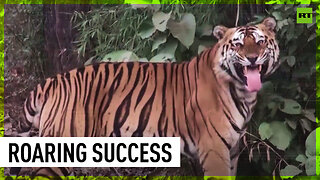 3:57
3:57
RT
1 year agoIndia's tiger population increases to over 3,000 due to conservation efforts
1.33K17 -
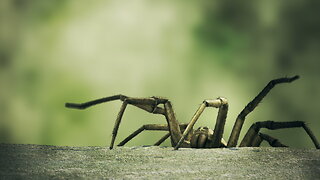 2:11
2:11
WhatDaStat
4 months agoAnimal-Encounter Fatalities by Country and World
54 -
 48:36
48:36
We The People - Constitutional Conventions
1 year agoKulbir Chawla, Lynne B Hoff and Stephen Garvey Wildlife Exploitation
112 -
 33:58
33:58
TheRealGunsmith
1 year agoThreats to our Wildlife, Long range "hunting" and mismanagement
82